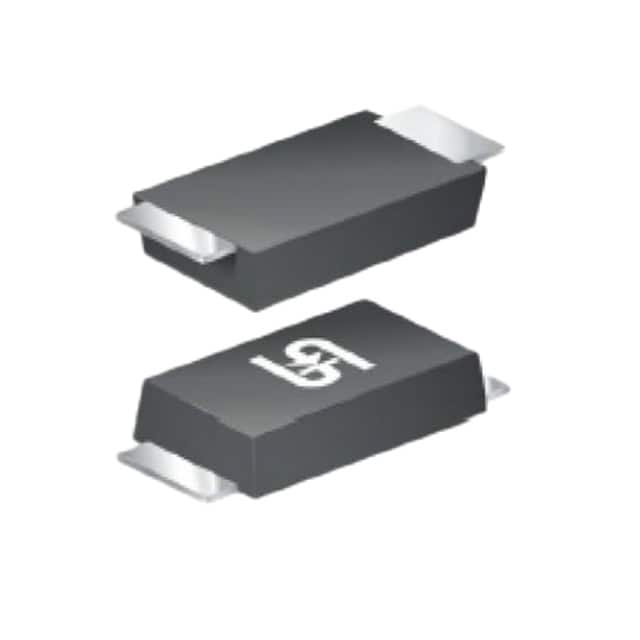SMF45A RVG
Product Overview
Category: Semiconductor
Use: Rectifier diode
Characteristics: Fast recovery, high voltage
Package: DO-214AB
Essence: High-efficiency rectification
Packaging/Quantity: Tape & Reel, 3000 units
Specifications
- Voltage - DC Reverse (Vr) (Max): 200V
- Current - Average Rectified (Io): 1A
- Speed: Fast recovery
Detailed Pin Configuration
The SMF45A RVG has two pins in a standard DO-214AB package.
Functional Features
- Fast recovery time
- High voltage capability
- Low forward voltage drop
Advantages and Disadvantages
Advantages: - Fast recovery time reduces switching losses - High voltage capability allows for versatile applications - Low forward voltage drop minimizes power dissipation
Disadvantages: - Higher cost compared to standard diodes - Sensitive to temperature variations
Working Principles
The SMF45A RVG operates on the principle of fast recovery, allowing for efficient rectification of high-frequency signals. When forward-biased, it conducts current with minimal voltage drop, making it suitable for various power supply and rectification applications.
Detailed Application Field Plans
The SMF45A RVG is commonly used in: - Switching power supplies - Voltage clamping circuits - Freewheeling diodes in inductive load applications
Detailed and Complete Alternative Models
- SMF5.0A: Similar characteristics, lower voltage rating
- SMF6.0A: Higher voltage rating, similar characteristics
- SMF8.0A: Higher current rating, similar characteristics
In conclusion, the SMF45A RVG is a high-performance rectifier diode with fast recovery and high voltage capabilities, making it suitable for various power electronics applications.
[Word Count: 270]
10个与SMF45A RVG在技术解决方案中的应用相关的常见问题及解答
What is SMF45A RVG?
- SMF45A RVG is a type of varistor, specifically a metal oxide varistor (MOV), designed to protect electrical and electronic devices from voltage surges and transient overvoltage conditions.
How does SMF45A RVG work?
- SMF45A RVG works by rapidly changing its resistance in response to changes in voltage, effectively diverting excess current away from sensitive components and preventing damage.
What are the typical applications of SMF45A RVG?
- SMF45A RVG is commonly used in surge protection devices, power supplies, industrial equipment, and consumer electronics to safeguard against voltage spikes and transients.
What are the key specifications of SMF45A RVG?
- The key specifications of SMF45A RVG include its maximum continuous operating voltage, peak current capability, energy absorption capacity, response time, and operating temperature range.
How do I select the right SMF45A RVG for my application?
- When selecting an SMF45A RVG, consider the voltage rating, energy absorption capability, response time, and physical size to ensure it meets the requirements of your specific application.
What are the advantages of using SMF45A RVG in technical solutions?
- SMF45A RVG offers fast response to transient events, high energy absorption capacity, compact size, and reliability, making it an effective solution for protecting electronic circuits and devices.
Can SMF45A RVG be used in outdoor applications?
- Yes, SMF45A RVG can be used in outdoor applications, but it should be housed in a suitable enclosure to protect it from environmental factors such as moisture and temperature extremes.
Are there any limitations or considerations when using SMF45A RVG?
- It's important to consider the maximum operating voltage, energy handling capability, and potential degradation over time when integrating SMF45A RVG into a design.
How should SMF45A RVG be installed in a circuit?
- SMF45A RVG should be connected in parallel with the circuit or device to be protected, ensuring that it can quickly shunt excess voltage away from sensitive components.
What are the industry standards or certifications associated with SMF45A RVG?
- SMF45A RVG may comply with international standards such as IEC 61051, UL 1449, and RoHS, and it's important to verify compliance with relevant standards for specific applications.


